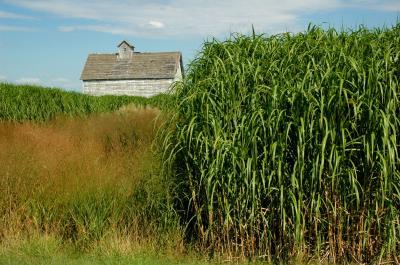Throughout the 1990s, biofuels were the environmental rage. Everyone from Vice-President Al Gore to Greenpeace touted them as the replacement for fossil fuels. The future belonged to such renewable energy.
Benefited by a Republican Congress that loved science, President George W. Bush mandated and subsidized biofuel energy, but only the final product. The product used to make this ethanol was left up to growers.
Biofuels were more hype than reality. Scientists knew that but policymakers don't get lobbied by scientists the way to they do environmentalists. The emissions to create biofuels are actually higher and too much ethanol is bad for cars, Al Gore later admitted he had embraced ethanol primarily to lay the groundwork for his presidential run and he had been incorrect.
And then there is the problem of invasive species. Since the crops were not specified, just the desire that fuel not be from oil. the potential for invasive species was also whitewashed by activists. If the America government is going to mandate and subsidize ethanol, and it does not seem to be stopping any time soon, researchers at the University of Illinois propose a set of regulatory definitions and provisions and a list of 49 low-risk biofuel plants from which growers can choose.

Test plots of switchgrass and Miscanthus. Credit: University of Illinois
"There are not a lot of existing regulations that would prevent the planting of potentially invasive species at the state or federal levels. For example, there are currently only four states (Florida, Mississippi, Oregon, and Maryland) that have any laws relating to how bioenergy crops can be grown and that include any language about invasive species—and, for the most part, when those words do appear, they are either not defined or poorly defined," says invasive plant ecologist Lauren Quinn.
In approving new biofuel products, Quinn said that the EPA doesn't formally consider invasiveness at all – just greenhouse gas emissions related to their production. "Last summer, the EPA approved two known invaders, Arundo donax (giant reed) and Pennisetum purpurem (napier grass), despite public criticism," added University of Illinoise professor of agricultural law A. Bryan Endres, who co-authored the research to define legislative language for potentially invasive bioenergy feedstocks.
Part of the problem is that there is no clear scientific definition of what it means to be invasive. The team of researchers used fundamental biological, ecological, and management principles to develop definitions for terminology commonly used to describe invasive species.
"Our definition of invasive is 'a population exhibiting a net negative impact or harm to the target ecosystem,' for example," Quinn said. "We want to establish guidelines that will be simple for regulators and informed by the ecological literature and our own knowledge. We also need to recognize that some native plants can become weedy or invasive. It's complicated and requires some understanding of the biology of these plants."
Quinn said that ideally the definitions and suggested regulations could become part of a revised Renewable Fuels Standard administered by EPA, which would require Congress to make the changes. The proposed regulations could also be adopted at the state level.
"Some of the biofeedstocks currently being examined by the EPA for approval, like pennycress, have a high risk for invasion," Quinn said. "Others have vague names such as jatropha with no species name, which is problematic. For example, there are three main Miscanthus species but only sterile hybrid Miscanthus × giganteus types are considered low risk. However, the EPA has approved "Miscanthus" as a feedstock without specifying a species or genotype" Quinn said. "That's fine for the low-risk sterile types but could mean higher-risk fertile types could be
approved without additional oversight."
According to Quinn, the white list, which includes 49 low-risk feedstock plants, will serve to clear up the confusion about plant names. The list was developed using an existing weed risk assessment protocol, which includes 49 questions that must be asked about a particular species based on its biology, ecology, and its history of being invasive in other parts of the world.
"Those questions are difficult to answer for new taxa, including plants that haven't been around long or have just recently been developed by breeders," Quinn said. "This will be the first time that they are out in the environment so we don't know what their potential for invasiveness is. But the white list offers plenty of choices of plants that are already commercially available, and the feedstocks on the list have a number of different industrial uses."
Quinn stressed that the native plants that are included in the white list are only recommended as the native genotypes grown in their native region, because although a plant may be native to a part of the United States, it could be considered invasive if grown in a different region.
"For example, Panicum virgatum is the variety of switchgrass that is low risk everywhere except for the three coastal states of Washington, Oregon, and California, but future genotypes that may be bred with more invasive characteristics, such as rapid growth or prolific seed production, may have higher risk."
The researchers believe that the white list provides producers with clearly identified low-invasion risk options and may reduce conflicts between objectives for increasing renewable fuel production and reducing unintended impacts and costs resulting from the propagation of invasive plants.





Comments